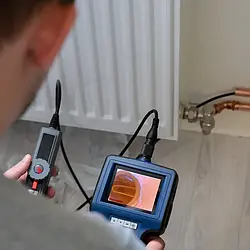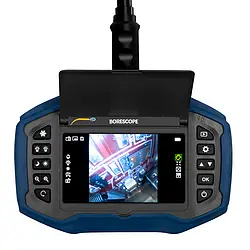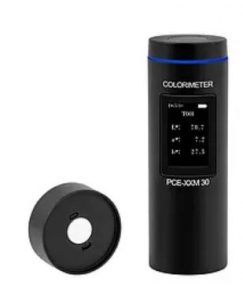In a world where technology is always developing, thermal cameras have become indispensable instruments in a variety of industries, ranging from industrial inspections and research to security and surveillance. The capacity to observe and capture thermal radiation opens up a world of possibilities, but choosing the correct thermal camera in Singapore for your unique needs is critical. Let’s take a look at the essential variables to consider when selecting a thermal camera in Singapore, which will assist you to invest wisely in a tool that meets your needs.
Factors to Consider when Choosing A Thermal Camera

- Resolution
The resolution of a thermal camera is an important feature that directly influences the sharpness of the images and videos it takes. Higher-resolution cameras produce more detailed thermal images, allowing for better analysis and identification of potential problems. When selecting a thermal camera in Singapore, you should make sure to choose one with a resolution that corresponds to the amount of detail required for your applications.
- Thermal Sensitivity
Thermal sensitivity, measured in millikelvins (mK), determines the camera’s capacity to detect minor temperature variations. A decreased thermal sensitivity implies that the camera can capture even the tiniest temperature swings, making it more effective in recognizing possible problems. It is important to choose a thermal camera with high thermal sensitivity for applications requiring precision.
- Temperature Range
The temperature measurement ranges of different thermal cameras vary from each other. It is critical to select a camera that can accurately capture the temperature range relevant to your specific requirements. Whether you are monitoring equipment at harsh temperatures or conducting building inspections, selecting a camera with an acceptable temperature range is critical for reliable findings.
- Image and Video Storage
If you need to capture and analyse a significant number of photos, you should consider the thermal camera’s storage capacity. Some cameras include built-in storage, but others require the use of external storage devices. So, assess your needs and select a camera with sufficient storage options, to enable flawless data handling.
- Ease of Use

If you are new to thermal imaging technology, user-friendliness is an essential factor to take into consideration. A well-designed interface and intuitive controls may significantly enhance the productivity of your workflow. To improve ease of use, you should look for cameras that have user-friendly menus, configurable settings, and ergonomic designs.
- Portability
Portability is also an important factor to consider when choosing a thermal camera. Whether you are conducting inspections in restricted places or working in the field, a tiny and lightweight thermal camera can make a considerable difference in flexibility and convenience.
- Battery Life
The amount of time a thermal camera can run on a single charge is critical, especially for professionals operating in isolated areas or for extended periods of time. Consider the camera’s battery life and make sure it corresponds to your usage patterns. If you are looking for a thermal camera for longer field use, you can choose a model that includes interchangeable batteries.
- Integration and Connectivity
Thermal cameras with easy integration with other devices and systems increase their versatility. Look for cameras that have Wi-Fi connectivity, USB ports, or compatibility with smartphone apps. Integration capabilities can improve data transfer and overall connectivity.
- Durability and Environmental Resistance
Thermal cameras can be employed in a variety of contexts, ranging from industrial settings to outdoor locations with various weather conditions., So you should always make sure to select a camera that is sturdy, resilient, and resistant to environmental influences in order to ensure durability and dependable operation in a variety of settings.
- Price and Value

While cost considerations are vital in selecting a thermal camera in Singapore, it is critical to balance cost with the features and capabilities that correspond with your individual demands. Before purchasing the thermal camera, you should consider its entire worth, taking into account its specs, durability, and the level of support supplied by the manufacturer.
Elevate Your Imaging Experience with Nax Thermal Cameras
Choosing the right thermal camera in Singapore requires a comprehensive examination of the aforementioned elements to ensure that it satisfies the specific needs of your applications. Nax thermal cameras are well-known for their dependability and versatility, as well as their cutting-edge technology. We offer a wide range of thermal cameras including, thermal monocular cameras, firefighting thermal cameras, online thermal cameras, handheld thermal cameras and many more. Purchasing a Nax thermal camera not only ensures the precision and effectiveness of your thermal imaging tasks but also provides you with a trustworthy companion in your professional endeavours. Make the right decision and improve your thermal imaging experience with Nax Instruments.
Color is more than a visual experience in a world dominated by aesthetics and functionality; it transmits information, triggers emotions, and influences decision-making. Food, cosmetics, textiles, and manufacturing industries all rely largely on accurate color measurement to maintain product uniformity, quality, and brand identity. The ability to correctly measure color is not only an aesthetic matter, but also a functional necessity, affecting consumer pleasure and product performance. Let’s take a look at the importance of color measurement, the concepts of spectrophotometers and colorimeters, and the science behind how they precisely measure color.
What are Spectrophotometers and Colorimeters?

Spectrophotometers and colorimeters are advanced instruments used to scientifically measure color. Spectrophotometers are very versatile, measuring the full light spectrum. Colorimeters, on the other hand, focus on specific color parameters and are frequently used in quality control applications.
How Spectrophotometers Measure Color?
Spectrophotometers use two primary strategies to operate: reflectance and transmittance. Reflectance measurements include shining light onto a sample surface and measuring the amount of light reflected at different wavelengths. This method is often used for solid materials such as fabrics, paints, and polymers.
Transmittance measurements, on the other hand, entail passing light through a transparent or translucent sample and measuring the amount of light that emerges on the other side. This method is extensively used in the analysis of liquids, films, and glass.
The interaction of light with the sample is the fundamental principle underlying both approaches. The spectrophotometer divides light into wavelengths, passes it through the sample, and measures the intensity of the transmitted or reflected light at each wavelength. The resulting spectrum is subsequently examined to quantify the sample’s color properties, which are frequently stated in terms of colorimetric values such as L*a* b*.
How Colorimeters Measure Colour

Colorimeters, while similar in concept, take a more specialized approach to color measuring. They are intended for specific applications and are easier to use than spectrophotometers. The measurement procedure consists of three major steps: illumination, light detection, and data processing.
- Illumination: Colorimeters emit a controlled light source onto the sample surface. The type of illumination used depends on the application and the qualities of the sample.
- Light Detection: The colorimeter measures the intensity and color of the light reflected or transmitted by the sample. The detector collects light and turns it into electrical impulses.
- Data Processing: The electrical impulses are then processed to calculate color parameters based on established color models. RGB (Red, Green, Blue) and L*a*b* are two common color spaces.
Nax Colorimeters and Spectrometers for Optimal Color Consistency
Colorimeters and spectrophotometers both play critical roles in assuring color accuracy across a wide range of industries. Nax colorimeters and spectrophotometers are excellent alternatives for individuals looking for precision and dependability in color measuring. Whether you are in the textile, paint, or food industries, investing in Nax colorimeters and spectrophotometers ensure that your products satisfy the highest standards of color consistency, Embrace the science of color measurement and improve your product quality with modern spectrophotometers and colorimeters from Nax Instruments.


